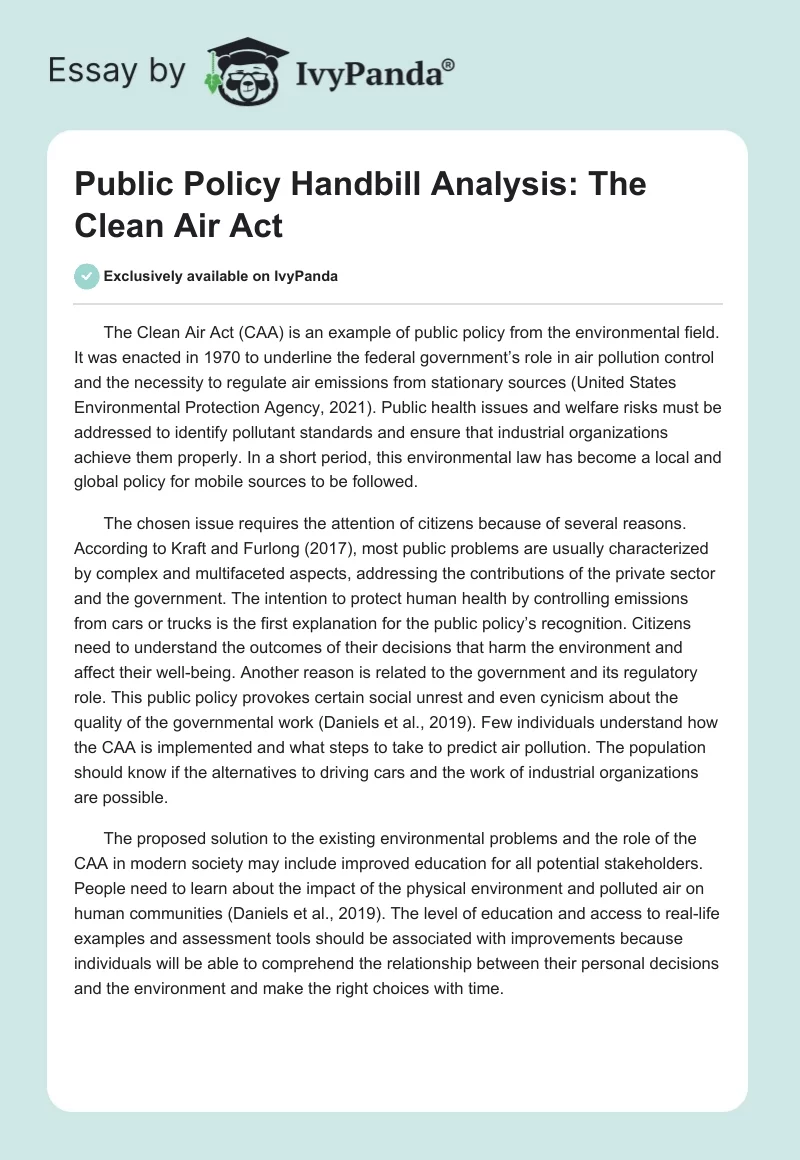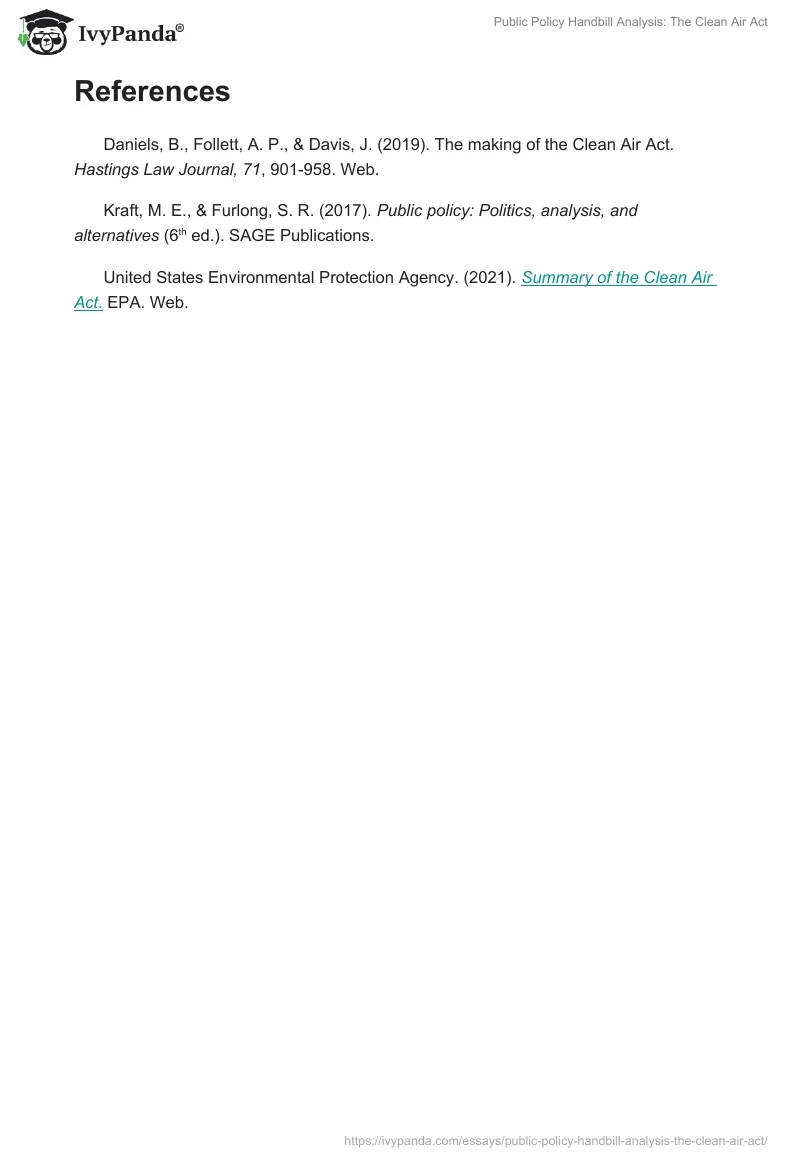The Clean Air Act (CAA) is an example of public policy from the environmental field. It was enacted in 1970 to underline the federal government’s role in air pollution control and the necessity to regulate air emissions from stationary sources (United States Environmental Protection Agency, 2021). Public health issues and welfare risks must be addressed to identify pollutant standards and ensure that industrial organizations achieve them properly. In a short period, this environmental law has become a local and global policy for mobile sources to be followed.
The chosen issue requires the attention of citizens because of several reasons. According to Kraft and Furlong (2017), most public problems are usually characterized by complex and multifaceted aspects, addressing the contributions of the private sector and the government. The intention to protect human health by controlling emissions from cars or trucks is the first explanation for the public policy’s recognition. Citizens need to understand the outcomes of their decisions that harm the environment and affect their well-being. Another reason is related to the government and its regulatory role. This public policy provokes certain social unrest and even cynicism about the quality of the governmental work (Daniels et al., 2019). Few individuals understand how the CAA is implemented and what steps to take to predict air pollution. The population should know if the alternatives to driving cars and the work of industrial organizations are possible.
The proposed solution to the existing environmental problems and the role of the CAA in modern society may include improved education for all potential stakeholders. People need to learn about the impact of the physical environment and polluted air on human communities (Daniels et al., 2019). The level of education and access to real-life examples and assessment tools should be associated with improvements because individuals will be able to comprehend the relationship between their personal decisions and the environment and make the right choices with time.
References
Daniels, B., Follett, A. P., & Davis, J. (2019). The making of the Clean Air Act. Hastings Law Journal, 71, 901-958. Web.
Kraft, M. E., & Furlong, S. R. (2017). Public policy: Politics, analysis, and alternatives (6th ed.). SAGE Publications.
United States Environmental Protection Agency. (2021). Summary of the Clean Air Act. EPA. Web.


